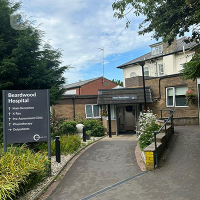Complex regional pain syndrome (CRPS)
What is complex regional pain syndrome (CRPS)?
Complex regional pain syndrome (CPRS) is a condition in which a person experiences persistent and severe pain usually in one of their arms or legs. It can sometimes affect other parts of the body.
It is poorly understood and the causes of CRPS it aren’t well known either.

What are the symptoms of CRPS?
The main symptom of CPRS is pain, which is typically felt in one limb. It is often severe and chronic pain. Sometimes, the pain can spread to other parts of the body and present as burning, stinging or stabbing, accompanied by tingling and numbness.
The skin can also be affected and become very sensitive. Sometimes, people with CRPS describe that even the slightest touch to the affected area or a small temperature change can bring about intense pain.
There may also be other CRPS symptoms that accompany the pain, such as:
- Skin changes — your skin may become very hot, red and dry and then other times be cold, sweaty or blue.
- Hair and nail changes — hair and nails around the affected area may grow slower or quicker.
- Strange bodily sensations — you may have the feeling that the affected limb doesn’t belong to the rest of the body. Other times it may feel bigger or smaller compared to the other limb.
- Inflammation and stiffness — your joints in the affected limb may feel stiff and the limb may swell.
- Other symptoms — muscle spasms, tremors, problems sleeping and problems moving around.
What are the causes of CPRS?
The causes of complex regional pain syndrome aren’t always clear. It seems to develop within a month after a minor or major injury, such as a burn, cut, sprain, strain or fracture. It has also been known to occur after surgery to an arm or leg.
After people recover from their injuries, CRPS pain typically spreads beyond the original injury site and can be more severe and long-lasting.
Many theories suggest that CPRS is the result of an abnormal response that causes various bodily systems to malfunction. These systems include the brain and spinal cord, the nerves, immune system and arteries and veins. Some experts have also suggested that genes play a role in the condition developing following an injury.
How is CPRS diagnosed?
There are no specific tests for CPRS. There are, however, tests which can be used to rule out other conditions. These include:
- Blood tests;
- X-ray;
- MRI scan;
- Nerve conduction tests.
You will need to undergo a physical examination by a doctor and other specialists.
How is CPRS treated?
There is no known cure for CPRS. Treatment involves self-managing complex regional pain syndrome using a combination of:
- Physical therapy;
- Education and self-management techniques;
- Medication;
- Psychological support.
Your healthcare specialist will offer you a well-designed treatment plan for CRPS that covers these four areas.
After following a CRPS treatment plan, most patients start to see a reduction in their pain and symptoms within two years.
There are many medications to help relieve your CRPS pain and accompanying symptoms. Your pain specialist will discuss these with you.
If medication doesn’t relieve pain after a considerable period, then you may be suggested spinal cord stimulation which sends mild electrical pulses to your spinal cord to change how your perceives pain.
People suffering from CPRS have to live with ongoing and longterm pain which can be very distressing. It can make them more prone to conditions such as anxiety and depression. Therefore, it is important to get psychological support to look after your mental wellbeing and to prevent other problems interfering with your CRPS rehabilitation programme.
Which specialist treats CPRS?
While the principal healthcare professional that treats CRPS is a pain specialist, there are often several specialists involved in CRPS treatment plans due to the complex nature of this condition. They can range from a GP, physiotherapist, occupational therapist, psychologist, social worker and employment adviser.












